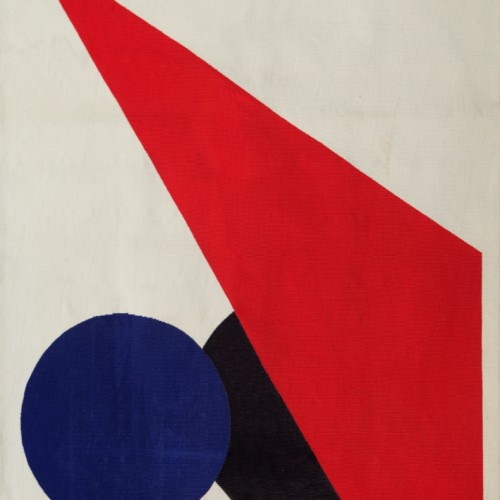Émile Gilioli
Gilioli is one of the leaders of lyrical abstraction in the French sculpture of 50s alongside Brancusi and Arp.
Emile Gilioli was born on June 10, 1911, in Paris, in a family of Italian shoemakers installed at the edge of the Canal Saint-Martin. He learns the art of the forge from childhood during the holidays in his paternal family around Mantua. At the end of the First World War, the Gilioli approach Italy by settling in Nice. The young Emile works in the family business and at the same time follows classes at the school of decorative arts of the city.
In 1928, he entered the service of a craftsman sculptor for whom he worked for two years before joining the Ecole des Beaux-Arts in Paris as a fellow. He is seeing then Jean Boucher’s studio where, like many artists of his generation, he is influenced by the work of Charles Malfray. Mobilized in 1939, he is sent to Grenoble and stay there until the Liberation. On the spot, he befriends Andry- Fracy, curator of the museum from 1919 to 1949, who conveys her interest in the cubism and presents it to the painter Closon, pioneer of French abstraction.
It is in the Grenoble city that he realizes his first personal exhibition at the Galerie Laforge in 1945. Back in Paris, he animates the young abstract school of Paris with Poliakoff and Deyrolle, and exhibited his works at the Breteau gallery in 1946. He then participates in most French and foreign artistic events: Salon des Réalités nouvelles in 1947, exhibited frequently at the Salon de Mai, and at Salon of the Young Sculpture. The Galliera museum devotes an exhibition to him in 1968. It exposes the same year its design of art in Sculpture. The simplicity of his art where form and matter are conditioned by each other, inspired both by archaic Greece, by statuary of ancient Egypt, and Cubism, earned him honoring numbers of public orders, particularly in the department of Isère, where he realizes the Memorial of Voreppe in 1946, the monument to the dead of the deportees of Grenoble en 1950, the monument of Chapelle-en-Vercors in 1951, the Gisant de Vassieux-en Vercors in 1952, the Memorial of the Resistance Plateau Glières in 1973.
Gilioli是法國50年代雕塑與Brancusi和Arp一起抒情抽象的領導者之一。 Emile Gilioli於1911年6月10日出生於巴黎,在聖馬丁運河邊緣安裝了一系列意大利製鞋商。他在曼圖亞周圍的父親家庭度假期間從童年中學習鍛造藝術。在第一次世界大戰結束時,Gilioli在尼斯定居意大利。年輕的Emile在家族企業工作,同時在城市裝飾藝術學院上課。 1928年,他進入了一位工匠雕塑家的服務,為此他工作了兩年,然後加入巴黎的Ecole des Beaux-Arts作為研究員。他正在看Jean Bocher的工作室,就像他那一代的許多藝術家一樣,他受到了Charles Malfray工作的影響。他於1939年動員,被派往格勒諾布爾並留在那裡直到解放。在現場,他與1919年至1949年的博物館館長Andry-Fracy結為朋友,他傳達了她對立體主義的興趣並將其呈現給畫家Closon,這是法國抽象的先驅。1945年,他在格勒諾布爾市實現了他在Laforge畫廊的第一次個人展覽。回到巴黎,他與Poliakoff和Deyrolle一起為巴黎的年輕抽象學校提供動畫,並於1946年在Breteau畫廊展出他的作品。然後他參加大多數法國和外國藝術活動:1947年的沙龍desRéalitésnouvelles,經常在Salon de Mai和青年雕塑沙龍展出。 Galliera博物館於1968年為他舉辦了一次展覽。同年,它展出了Sculpture的藝術設計。他的藝術簡單,形式和物質相互制約,靈感來自古老的希臘,古埃及的雕像和立體主義,使他贏得了許多公共秩序,特別是在伊澤爾省,他在那裡實現紀念1946年的Voreppe紀念碑,1950年格勒諾布爾被驅逐者死者的紀念碑,1951年的Chapelle-en-Vercors紀念碑,1952年的Gisant de Vassieux-en Vercors紀念碑,1973年的抵抗高原格里埃爾紀念碑。


